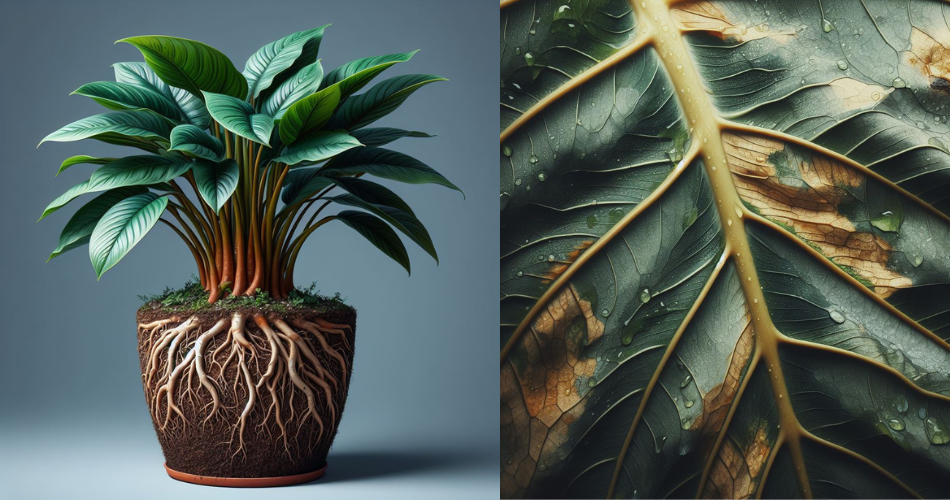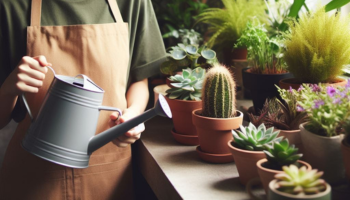
Philodendrons are beloved houseplants known for their lush foliage and ability to thrive in various indoor conditions. However, if you notice your philodendron leaves starting to droop, it can be a cause for concern. Understanding the reasons behind this issue is crucial in order to provide the necessary care and revive your plant’s health. In this article, we will explore the common causes of philodendron leaves drooping and provide practical solutions to help you maintain vibrant and healthy foliage. By implementing these strategies, you can ensure that your philodendron thrives and continues to beautify your indoor space.
1. Introduction to Philodendron Leaves Drooping
Ah, the majestic philodendron plant. With its lush green leaves and tropical vibes, it’s a popular choice for plant enthusiasts everywhere. But what do you do when those beautiful leaves start to droop? Fear not, dear reader, for I am here to shed some light on the causes and solutions for philodendron leaves drooping. Let’s dive in!
2. Common Causes of Philodendron Leaves Drooping
2.1 Insufficient Watering as a Cause of Philodendron Leaves Drooping
Just like us, plants need water to thrive. If you notice your philodendron leaves drooping, it could be a sign of dehydration. Perhaps you’ve been a little neglectful with your watering routine, and your poor plant is crying out for a drink. Time to show some love with a refreshing splash of water!
2.2 Overwatering as a Cause of Philodendron Leaves Drooping
Ah, the classic case of too much of a good thing. While plants need water, they also need a chance to dry out a bit. Overwatering can cause root rot, leading to droopy leaves. So, my fellow plant parent, resist the temptation to shower your philodendron with love and H2O all the time. Let it breathe, let it dry, and let those leaves stand tall once again.
2.3 Environmental Factors Contributing to Philodendron Leaves Drooping
Sometimes, it’s not you, it’s the environment. Philodendrons are sensitive creatures, and extremes in temperature or humidity can cause them to wilt. Is your plant sitting near a drafty window or in a sauna-like bathroom? It might be time to relocate it to a more comfortable spot. Remember, plants enjoy a cozy environment, just like you do.
2.4 Pests and Diseases Associated with Philodendron Leaves Drooping
Oh, the horror of unwanted visitors. Pests and diseases can wreak havoc on our beloved plants, and philodendrons are no exception. If you suspect that those drooping leaves are the result of an insect invasion or a fungal infection, it’s time to play detective and eliminate those pesky culprits. Your philodendron will thank you with perky leaves and a sigh of relief.
3. Proper Care and Solutions for Philodendron Leaves Drooping
3.1 Assessing the Watering Needs of Philodendron Plants
To water or not to water, that is the question. Finding the right balance is key to keeping your philodendron happy and its leaves standing tall. Take a moment to assess the moisture levels in the soil before reaching for that watering can. Stick your finger an inch or two into the soil – if it’s dry, it’s time for a drink. If it’s still moist, hold off a bit longer. Remember, moderation is key, my friend.
3.2 Adjusting the Environmental Conditions for Healthy Philodendron Leaves
Being the considerate plant parent that you are, it’s time to create the perfect ambiance for your philodendron. Ensure it’s not exposed to extreme temperatures or drafts. Find a cozy spot with indirect sunlight and reasonable humidity levels. If your home resembles the arctic tundra or the Sahara desert, it might be wise to invest in a humidifier or a little green oasis for your plant to thrive in.
3.3 Preventing Pests and Diseases in Philodendron Plants
Nobody likes uninvited guests, especially when they’re munching on your gorgeous philodendron leaves. Keep a watchful eye for any signs of pests or diseases and take immediate action. Regularly inspect your plant, clean its leaves, and, if necessary, use organic pest control methods to keep those unwanted visitors at bay. Remember, a healthy plant is a happy plant!
3.4 Additional Tips for Reviving Drooping Philodendron Leaves
Reviving drooping philodendron leaves is like giving your plant a motivational pep talk. Trim away any yellow or brown leaves to encourage new growth. Consider repotting if the roots are becoming overcrowded. And don’t forget to give your philodendron some love and encouragement – a little positive reinforcement goes a long way!
4. Conclusion and Final Thoughts on Philodendron Leaves Drooping
So there you have it, dear plant enthusiasts! Drooping philodendron leaves may be a cause for concern, but with the right care and attention, your plant can bounce back to its former glory. Remember to assess watering needs, adjust environmental conditions, keep pests and diseases at bay, and be a supportive plant parent. With a little love and a green thumb, your philodendron will be back on its feet – or rather, its leaves – in no time.
4. Conclusion and Final Thoughts on Philodendron Leaves Drooping
In conclusion, philodendron leaves drooping can be a sign of various underlying issues, including improper watering, environmental factors, and pest infestations. By accurately identifying the cause, you can implement the appropriate solutions to restore your plant’s health and vitality. Remember to assess your watering habits, adjust environmental conditions, and take preventive measures against pests and diseases. With proper care and attention, your philodendron will regain its upright and vibrant leaves, bringing joy and beauty to your indoor space once again. Happy gardening!
FAQ for Philodendron Leaves Drooping
1. Why are my philodendron leaves drooping?
Philodendron leaves can droop due to various reasons, including inadequate watering, overwatering, environmental factors such as temperature or humidity fluctuations, and pest infestations. It’s important to assess these factors to determine the exact cause and apply the appropriate solutions.
2. How can I prevent philodendron leaves from drooping?
To prevent philodendron leaves from drooping, ensure that you are providing the right amount of water, allowing the soil to dry slightly between watering sessions. Maintain a consistent and suitable temperature and humidity level, avoiding extreme fluctuations. Regularly inspect your plant for pests and diseases, implementing preventative measures promptly.
3. Should I cut off drooping philodendron leaves?
It is generally advised not to cut off drooping philodendron leaves immediately. Instead, focus on identifying and addressing the underlying cause of the drooping. In some cases, the leaves may be salvageable with proper care. However, if a leaf is severely damaged or shows signs of disease, it may be necessary to remove it to prevent further spread.
4. How long does it take for philodendron leaves to recover?
The recovery time for philodendron leaves can vary depending on the cause of the drooping and the extent of damage. With proper care and the implementation of appropriate solutions, you may start to see improvements within a few weeks. However, it’s important to be patient as the recovery process can take several months for the plant to fully regain its health and for new leaves to grow.



